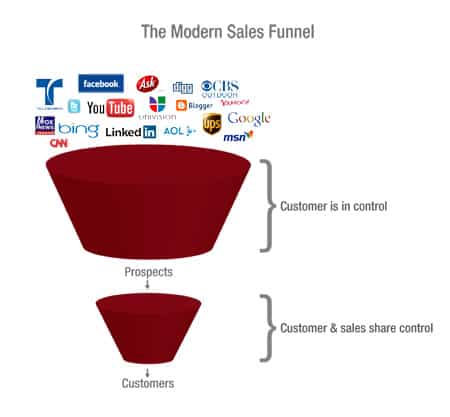Content marketing is a phrase that means many things to many people; but for all its ambiguity, one thing is for certain: it’s growing. According to the Content Marketing Institute (CMI), content marketing spend has increased every year since the company’s first benchmark report in 2011, adoption has risen across B2B and B2C industries and more companies are searching for content marketers every year.
Yet, despite the fact that more than nine out of ten marketers utilize content marketing tactics, only 21 percent of B2B marketers and 23 percent of B2C marketers are successful at tracking content marketing ROI. It’s interesting that companies are not only continuing but increasing, investments in a practice that the large majority of marketers cannot prove to be effective.
So is content marketing ineffective, or do marketers simply need to change their approach to proving ROI? There are three realizations content marketers must come to in order to begin proving returns.
Much of the problem is rooted in the ambiguity of content marketing, which leads to its treatment as a form of advertising. According to CMI, “content marketing’s purpose is to attract and retain customers by consistently creating and curating relevant and valuable content with the intention of changing or enhancing consumer behavior. Basically, content marketing is the art of communicating with your prospects without selling.”
In that regard, content marketing is distinctly different from advertising. Advertising, more or less, is about telling (or showing) prospects how awesome your brand is. There’s a direct tie to a brand’s products or services through advertising, and the desired action is much clearer: become a customer. Content marketing, on the other hand, is about creating content that’s helpful or valuable for your prospects in order to encourage profitable consumer action farther down the road (or funnel).
Simply put, advertising is a bottom-of-the-funnel marketing strategy in which the customer and sales share control, whereas content marketing is a top-of-the-funnel strategy in which the customer is in control. The modern sales funnel from BizOxygen illustrates this concept below:

Prior to the advent of content marketing, marketing spend was typically directed towards activities that would generate bottom of the funnel conversions or macro conversions. In these traditional advertising models, a direct investment in a program could be expected to yield a corresponding lift in top-line revenue, and it was fairly simple to measure ROI.
Nowadays, many corporate executives expect the same sort of direct results from investments in content marketing, but it’s not as simple as it may seem. Marketers should not expect to be able to look at dollars spent on content marketing and tie them directly to revenue—there’s simply too much time and too many engagements from the first point of contact to sale.
As residents of the opposite ends of the sales funnel, content marketing and advertising are different strategies, despite having the same ultimate purpose of increasing sales. Content marketing lengthens the customer’s buying journey by accessing prospects earlier in the decision-making process—essentially before they know they need your product or service.
In contrast, advertising influences purchasing decisions from prospects that are ready to buy. Naturally, a much longer period of time is likely to occur between top-of-the-funnel touch points and a sale than bottom-of-the-funnel touch points and a sale. That longer time period enabled by content marketing creates room for a greater number of micro conversions or engagement activities prior to purchase with each prospect. It’s these micro conversions that should determine the success of content marketing programs—not revenue.
Micro conversion metrics can vary by content type, content purpose, business type, and products, among other variables. Jay Baer’s Field Guide to the Four Types of Content Marketing Metrics provides a foundation for looking at micro conversions through the scopes of consumption, sharing, lead generation and – ultimately – sales metrics. Sales (i.e. macro conversions) should be tied back to the appropriate micro conversions that support them.
To prove any sort of returns on your content marketing efforts, you’ve first got to understand what to measure and why. Know the intent of each content asset and establish relevant metrics for benchmarking success. Traffic, pages viewed, bounce rate, time on page, and ungated downloads are all examples of consumption metrics. Tweets, shares, likes, +1s, pins, email forwards, and inbound links are all examples of sharing metrics. Finally, lead generation metrics include form submissions, email subscriptions, and conversion rates. What’s important is that appropriate micro conversion goals and metrics are established for every content marketing initiative, rather than macro conversion goals and metrics.
If you’re in the majority of content marketers that struggle to prove ROI, the first place to start is by embracing the differences between content marketing and advertising. Content marketing isn’t advertising, and shouldn’t be treated—or measured—as such. Finally, understanding content marketing micro conversions and setting up the proper goals and metrics will allow you the freedom to prove that what you’re doing is working.
Stay tuned for the next article on content marketing measurement, focused on promotional channels.